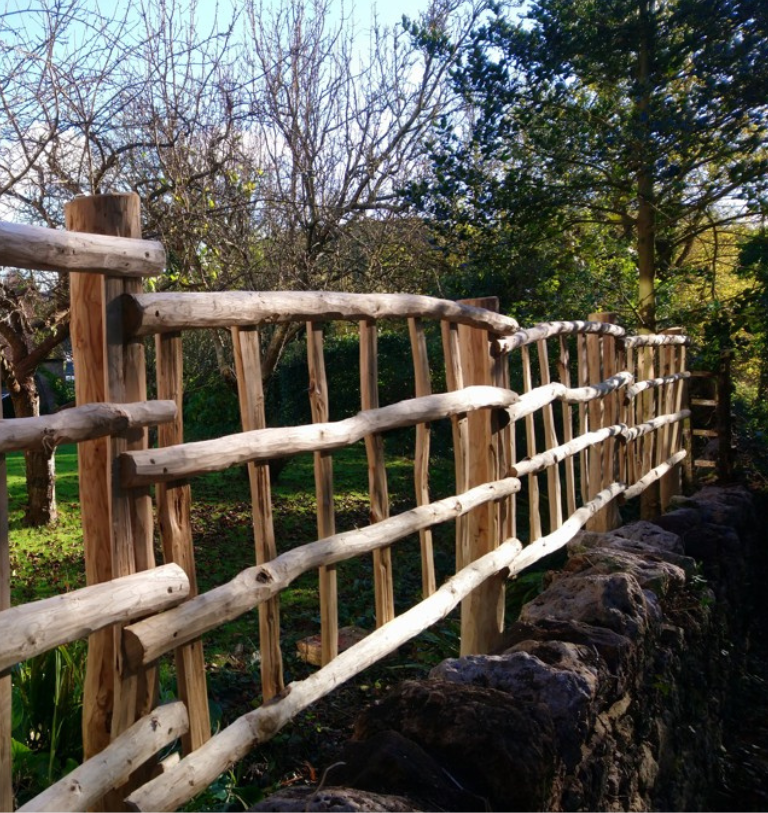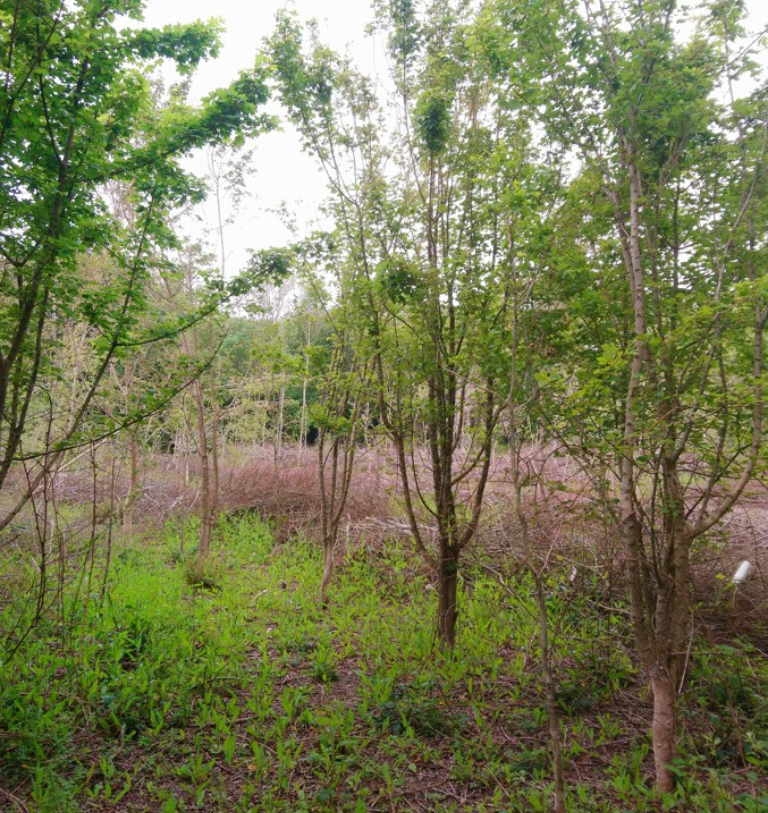
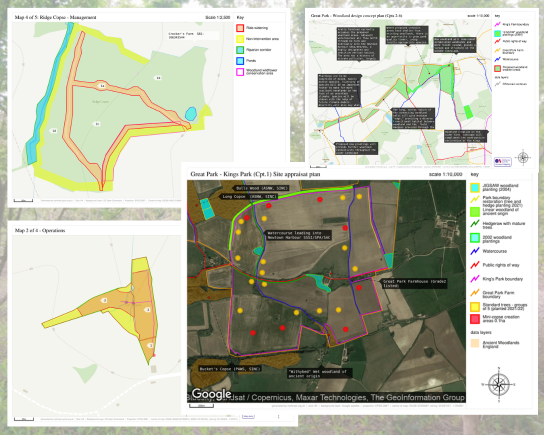
Woodland Management
The Island’s woodland are recognised as being unique in character, due mainly to the fact we have no wild deer population present. The lack of browsing from deer leads to a dense “understorey” of woodland shrubs and Hazel which provides a perfect habitat for many wildlife species, in particular, the Hazel Dormouse and the Island’s signature species; the Red Squirrel.
Active management of our woodlands is key to maintaining the structural diversity and therefore biodiversity of the habitat. The rich biodiversity of Britain’s ancient woodlands has only come about due to active management over many centuries. The sustainable cutting of trees on a cycle using techniques such as “coppicing” and the gradual thinning of larger canopy trees, lets light onto the woodland floor promoting the regeneration of young trees, scrub, and wildflowers, which in turn provide a habitat for many species of insects, birds, and mammals. Since WW2, woodlands across the Island have fallen out of active management, developing a uniform, shady canopy, putting many of these key plant and wildlife species at risk.
Our woodlands now also face other significant threats; Climate change has meant woodlands are under stress from extreme weather events such as storms and drought and also an increased level of pests and diseases that thrive when ecosystems are under stress.
In the face of a climate emergency, our woodlands are vital to maintaining a functioning biosphere. A well-managed woodland can sequester more greenhouse gasses, regulate temperature, be a haven for biodiversity and provide a renewable source of timber and non-timber products.
We can assist with all aspects of managing your woodland, drawing on over 20 years’ experience in the field, all with the good of your wood at heart;
- Woodland management plans and consultancy
- Felling licences and grant applications
- New woodland planning
- Creation and restoration of habitat features
- Tree planting
- Coppicing
- Thinning and felling
- Marketing of produce
It is a challenging time and a great responsibility to have trees in our care during our short lifetimes. We have a duty to ensure their wise management for future generations and the myriad of other species which depend upon them.
Contact us on
Agroforestry
Agroforestry is the integration of trees and shrubs with crops and/or livestock on the same piece of land.
Over the last century or so, the role of trees have become more and more reduced as a productive part of the farm and the disciplines of agriculture and forestry have grown further apart.
In recent years there has been a renewed interest in the integration of both disciplines once more for a number of sound ecological and economic reasons
- Farming in “3D” increases the Land Equivalent Ratio (LER) and therefore overall yield by using the vertical and horizontal elements of the landscape.
- Biodiversity; provides an increase in the diversity of habitats within the field, encouraging beneficial insects and birds and therefore pollination and natural pest control of crops.
- Livestock health; Trees provide both shelter and shade, meaning livestock have to spend less energy regulating temperature, so therefore benefit from higher levels of wellbeing which can also lead to increases in productivity.
- Livestock diet diversity; Trees can form a valuable and healthy addition to the diet of all farmed animals, containing minerals and trace elements not contained in grass-based forage. This can lead to reduced need for medication, better overall health and also a reduction in some greenhouse gas emissions. “Tree hay” and browse from hedges and woodlands often formed an important part of the diet of livestock before agricultural intensification.
- Climate resilience and soil conservation; The integration of trees can help farming systems copse with the extremes of climate change, providing shade, wind protection, increasing water infiltration and reducing run-off and soil loss.
- Provide additional income streams; Trees provide a number of opportunities for farms to diversify the productivity of their land. This could be through the production of fruit, nuts, timber, woodchip or wood-fuel into any current agricultural or horticultural system.
Agroforestry is now seen as one of the key elements of a regenerative farming system. The new DEFRA Environmental Land Management Scheme (ELMS) is set to have an agroforestry standard with funded options. A number of ELMS agroforestry pilot schemes are currently underway in the UK, evaluating how the different options perform and can be funded.
Tom has undertaken training in agroforestry system design at Farm-ED in Gloucestershire and is a keen advocate of the many benefits it can have in any farming system. He believes it is a wise choice for resilient farming in the future.
The old saying goes “ The best time to plant a tree is 20years ago, the second best time is now!” So don’t delay, contact us today for a consultation!
We can provide the following services;
- Overall system design
- Tree selection and supply
- Tree planting and aftercare.
Call today for a free initial consultation of how trees could benefit your farming system.
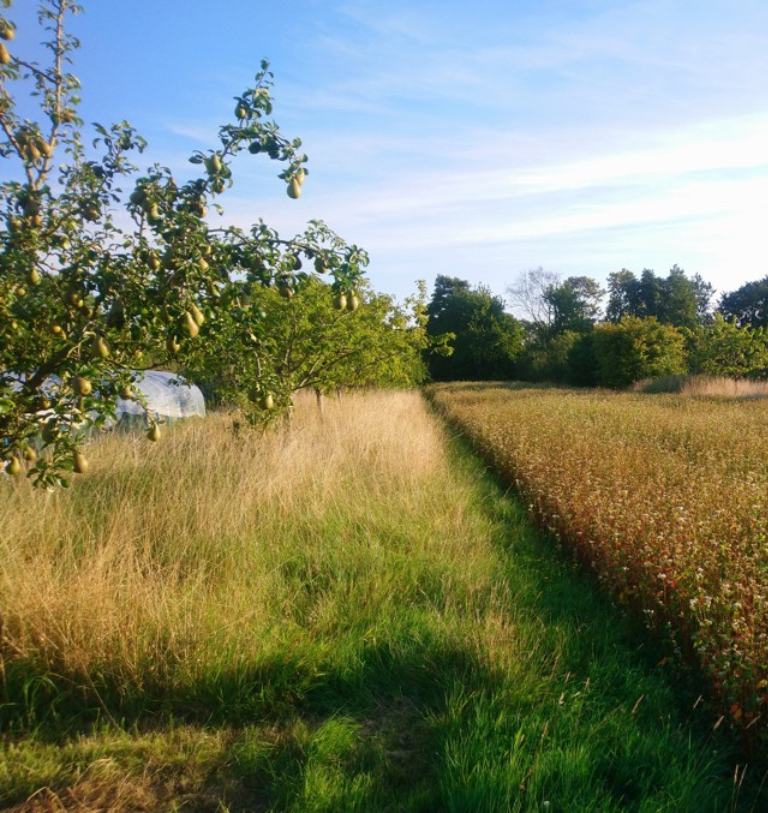
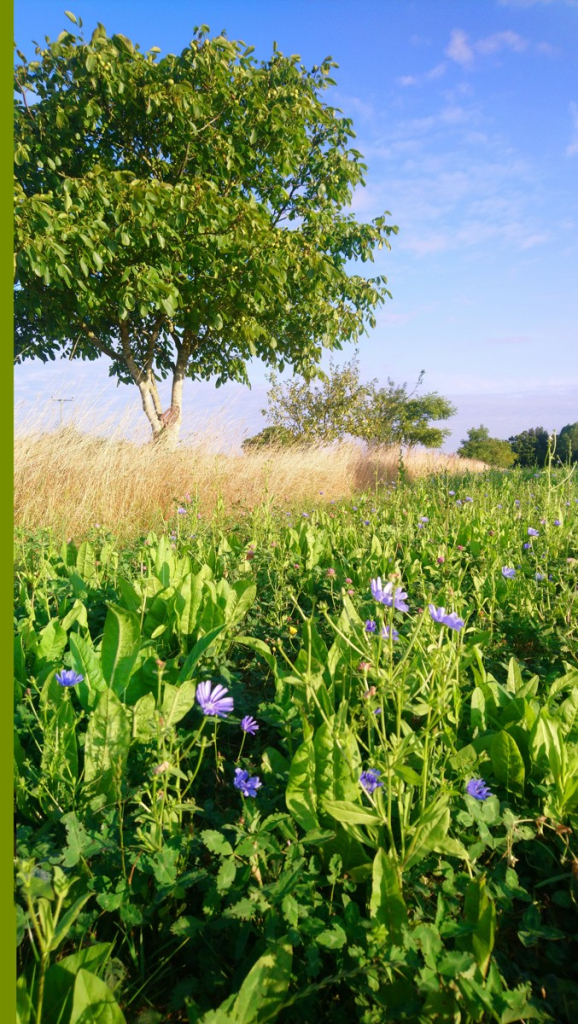
Contact us on
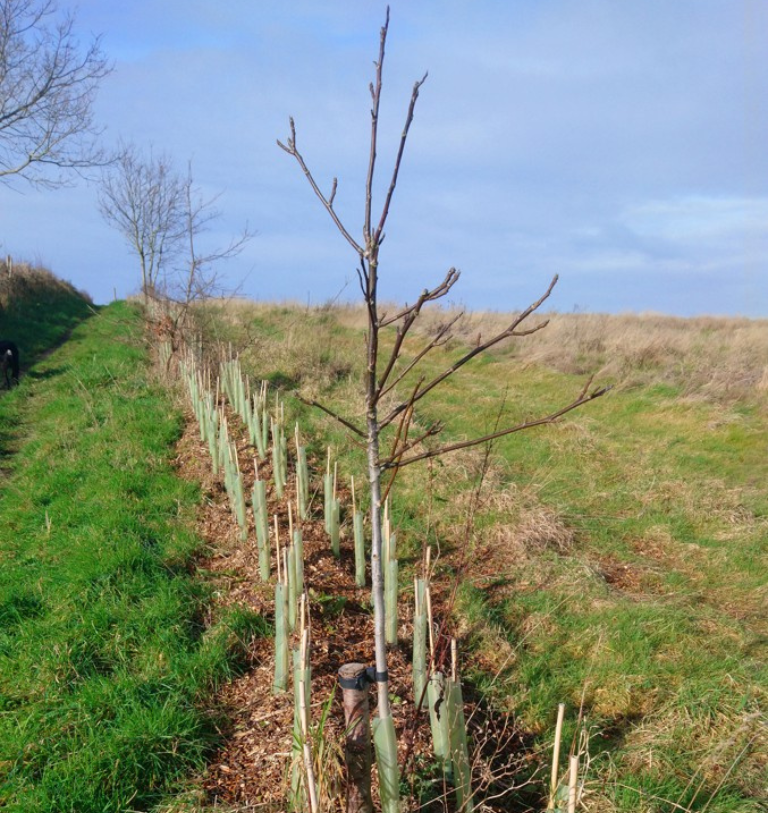
Hedges
Countryside hedge management refers to the practice of caring for and maintaining hedgerows in rural areas. Hedgerows are important features of the rural landscape, providing a range of ecological, social, and economic benefits. These benefits can include:
Habitat: Hedgerows provide habitat for a wide range of wildlife, including birds, mammals, insects, and plants.
Soil conservation: Hedgerows can help to reduce soil erosion and improve soil health by slowing down runoff and filtering sediment.
Landscape value: Hedgerows add to the visual and cultural value of the rural landscape, and can be important for local heritage and identity.
Agricultural benefits: Hedgerows can help to improve agricultural production by providing shelter for crops and livestock, reducing the impacts of wind and frost, and offering habitat for beneficial insects such as pollinators.
Countryside hedge management can include tasks such as pruning and coppicing (cutting back the trees and shrubs to ground level) to maintain the structure and health of the hedge, and planting new hedges to restore degraded or missing stretches.
Good hedge management practices can help to maintain the ecological, social, and economic benefits of hedgerows, and ensure that they continue to play an important role in the rural landscape for generations to come.
Contact us on
Chestnut Fencing
Chestnut fencing refers to a type of fencing made from chestnut wood, which is a type of hardwood that is native to Europe and parts of Asia. Chestnut wood is valued for its durability, strength, and natural resistance to decay, making it a popular choice for outdoor structures such as fencing, gates, and retaining walls.
Chestnut fencing is typically made by splitting chestnut logs into rails and then using these rails to construct a fence. The split rails are held in place with wooden stakes, and the fence is often topped with a line of chestnut poles to provide additional stability. This traditional method of construction creates a rustic and natural-looking fence that blends well with the rural landscape.
Chestnut fencing offers a number of benefits, including:
Durability: Chestnut wood is naturally durable and resistant to decay, making it ideal for outdoor use.
Sustainability: Chestnut is a renewable resource that is grown in managed forests, ensuring a sustainable supply for fencing and other uses.
Aesthetics: Chestnut fencing provides a natural and attractive look that blends well with the rural landscape.
Ecological benefits: Chestnut forests play an important role in the ecosystem, providing habitat for wildlife and helping to regulate the water cycle.
Overall, chestnut fencing is a sustainable and attractive option for those looking to create a natural and functional fence in the countryside.
